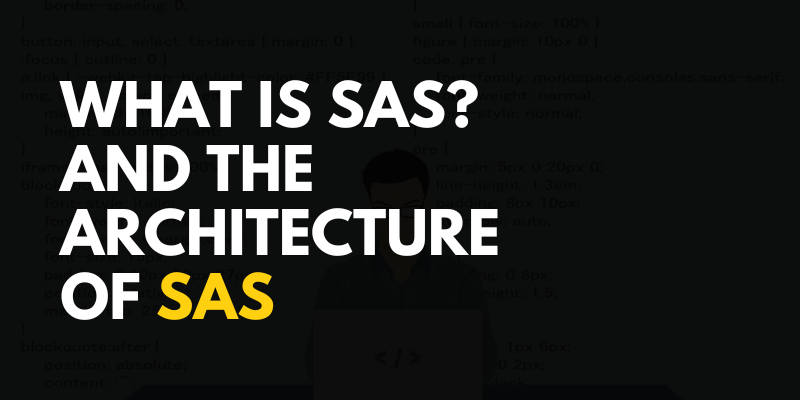
What is SAS? and the Architecture of SAS
SAS is a command-driven statistical software suite widely used for analysis and visualization. SAS stands for Statistical Analysis Software. It enables you to use qualitative techniques and processes to boost employee productivity and business profits. Join FITA Academy for the best SAS Training in Chennai.
Why Do We Need SAS?
Consider an e-commerce company that wants to learn about its customers’ purchasing habits based on historical data. The company must consider thousands of records from various customers to gain a general understanding. SAS has more job profiles. Here, we describe the types of job profiles you should take up as a SAS professional.
Alternative SAS Tools
R: It is an open-source programming language. It is simple to learn because it is well-documented and has powerful statistical capabilities.
Python: It is a widely used popular programming language. It works with libraries like Numpy, Scipy, and MatPlotLib. You can perform any statistical operation or build any model using these libraries.
The architecture of SAS
SAS architecture is divided mainly into three parts:
- Client Tier
- Middle Tier
- Back tier
Client Tier
The application is installed on the user’s machine in the client tier. It comprises the components used to view the portal and its content. It includes a standard web browser for interacting with the portal via the standard HTTP or HTTPS protocol. SAS Course in Chennai provides you with more benefits and opportunities.
Middle Tier
This provides a centralized access point to enterprise data. Components in this tier handle all content access. The separation of business and display logic allows you to leverage middle-tier logic. Moreover, centralized access points facilitate the enforcement of security rules, the administration of the portal, and the management of code changes.
Information Delivery Portal Web Applications
It consists of JSP, Java servlets, JavaBeans, and other classes and resources. These components allow you to access information stored in the enterprise directory to create a customizable user interface.
Servlet Engine
The servlet engine, also known as a servlet container, is in charge of running the SAS Information Delivery Portal Web Application. It provides a run-time environment and offers concurrency, deployment, lifecycle management, and other features.
Web Server
The web server provides support for the servlet engine, which hosts websites. This should be done through the portal.
Back Tier
The back tier is where the data and computation servers containing business objects reside. It is a directory server for businesses. The enterprise directory server stores metadata about content across the enterprise. FITA Academy reviews will help you understand how learners are placed in top IT companies, and the student will build trust in joining us.
Now you would have understood What is SAS? and the Architecture of SAS. So, to have a profound understanding of SAS, you can join SAS Training Institute in Chennai and equip yourself with its benefits, features and functions.
